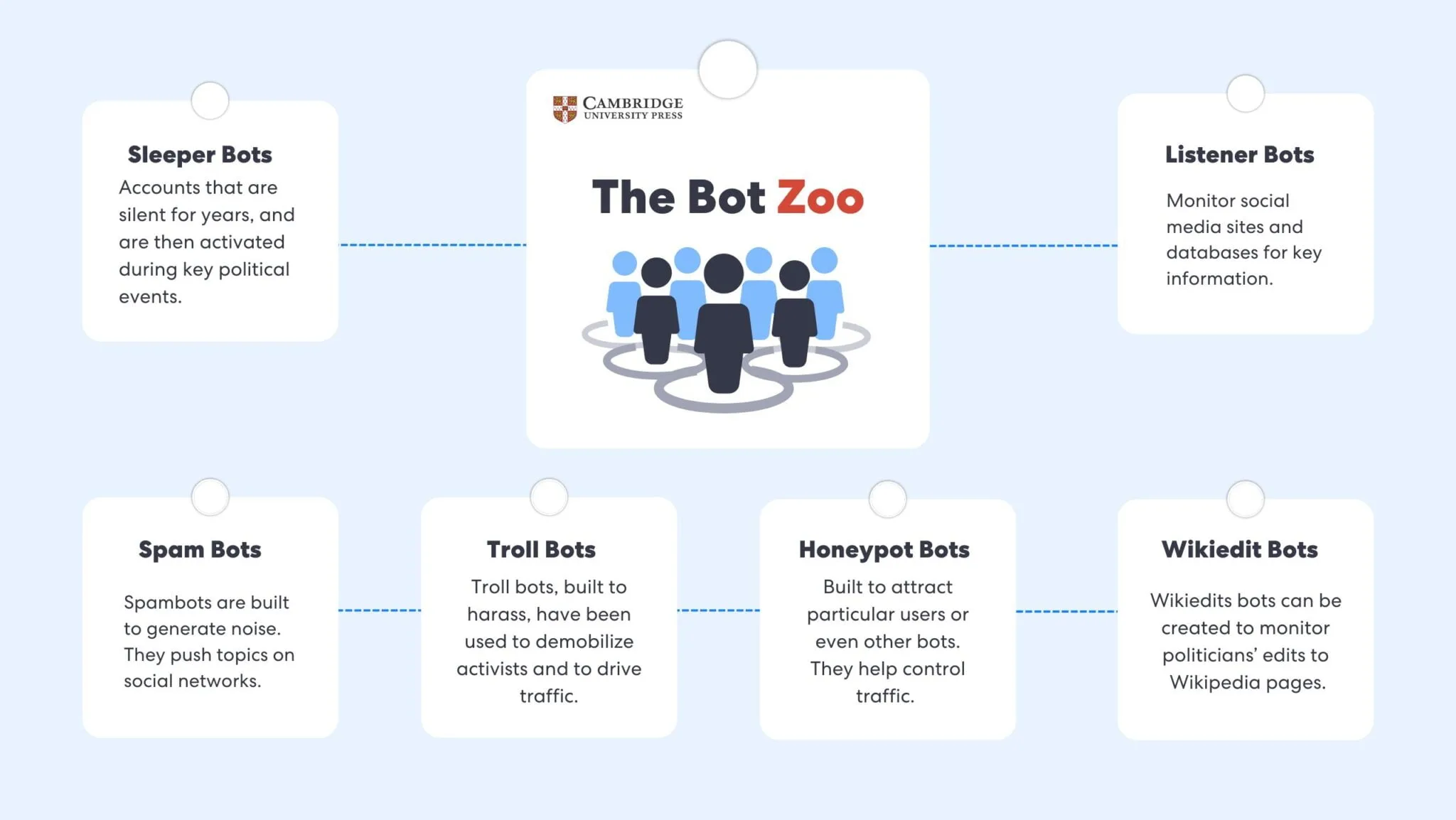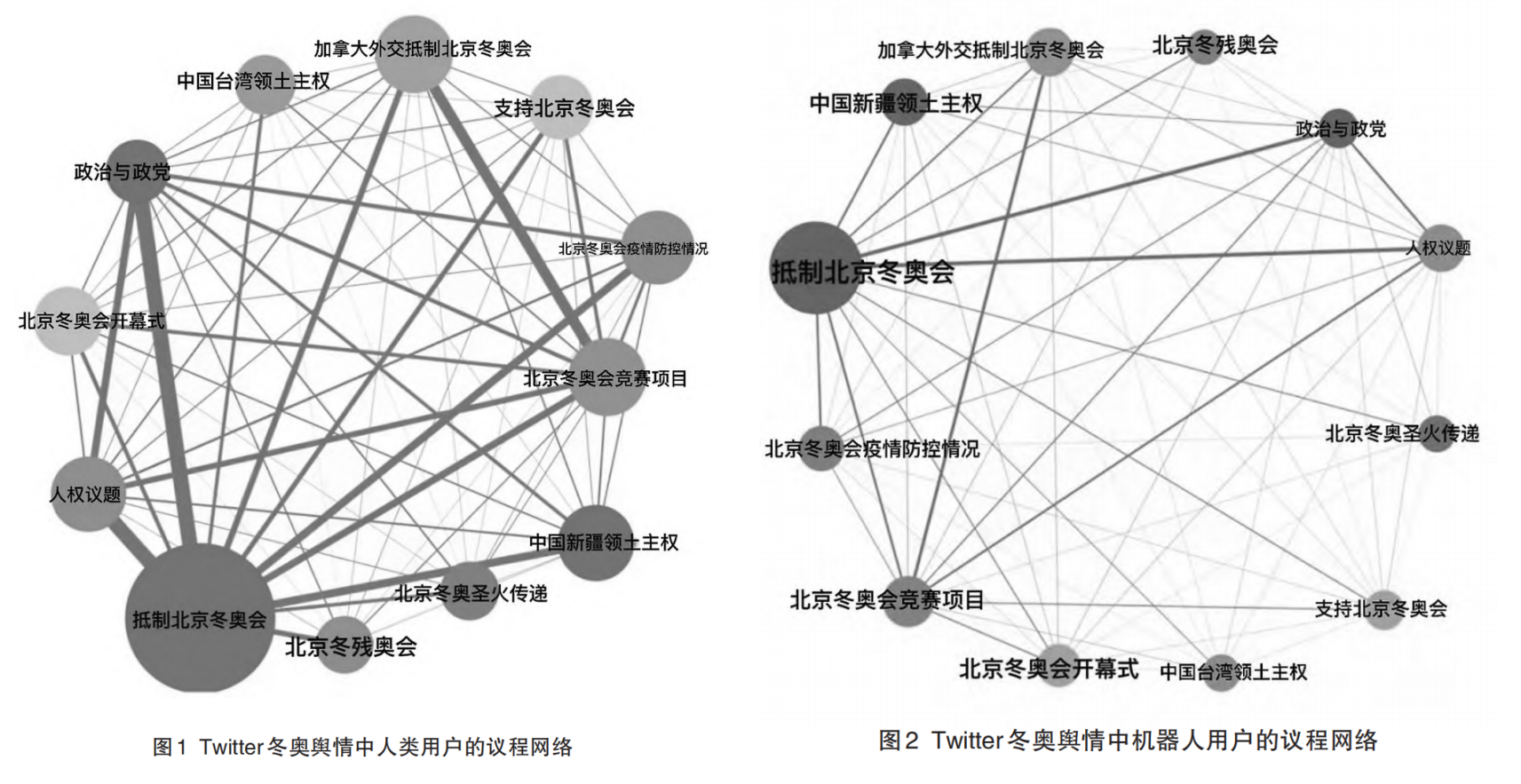<blockquote class="wp-block-quote is-layout-flow wp-block-quote-is-layout-flow"><p>原创内容,转载请告知</p></blockquote><blockquote class="wp-block-quote is-layout-flow wp-block-quote-is-layout-flow"><p>推荐阅读:</p>
<a href="https://www.computerworld.com/article/3632173/meta-puts-the-dead-internet-theory-into-practice.html"
class="xd-link-card"
style="--bg-image: url('https://www.computerworld.com/wp-content/uploads/2025/05/3632173-0-11999700-1747897214-anonymous_faceless_mask_identity_mystery_by_john_noonan_cc0_via_unsplash_1200x800-100766357-orig.jpg?quality=50&strip=all&w=1024')">
<div class="xd-card-image">
<img src="https://www.computerworld.com/wp-content/uploads/2025/05/3632173-0-11999700-1747897214-anonymous_faceless_mask_identity_mystery_by_john_noonan_cc0_via_unsplash_1200x800-100766357-orig.jpg?quality=50&strip=all&w=1024" alt="">
</div>
<div class="xd-card-content">
<div class="xd-card-title">
<img class="xd-card-icon" src="https://www.computerworld.com/wp-content/themes/cw-b2b-child-theme/src/static/img/cw/apple-touch-icon.png" alt="">
<span class="xd-card-title-text">Meta puts the 'Dead Internet Theory' into practice – Computerworld</span>
</div>
<p class="xd-card-description">The company's plans to host millions or billions of fake AI-powered users are being rejected by real users. Don't follow Meta's bad example.</p>
<span class="xd-card-url">https://www.computerworld.com/article/3632173/meta-puts-the-dead-internet-theory-into-practice.html</span>
</div>
</a>
<a href="https://epicvr.pl/en/dead-internet-theory-is-the-internet-we-know-dead/"
class="xd-link-card"
style="--bg-image: url('https://epicvr.pl/epicvr-source/uploads/2024/04/6360ee6d-08bb-403f-ba0c-3c1f73ff1e21.webp')">
<div class="xd-card-image">
<img src="https://epicvr.pl/epicvr-source/uploads/2024/04/6360ee6d-08bb-403f-ba0c-3c1f73ff1e21.webp" alt="">
</div>
<div class="xd-card-content">
<div class="xd-card-title">
<img class="xd-card-icon" src="https://epicvr.pl/epicvr-source/uploads/2017/02/cropped-epicvr-filmy-vr-aplikacje-vr-1-32x32.png" alt="">
<span class="xd-card-title-text">Dead Internet Theory: Is the Internet We Know dead? – EPIC VR – VR/AR Software and Games Developer</span>
</div>
<p class="xd-card-description">Dead Internet Theory (DIT) is a controversial concept that has gained popularity over the past decade, stating that most of the content on the internet is</p>
<span class="xd-card-url">https://epicvr.pl/en/dead-internet-theory-is-the-internet-we-know-dead/</span>
</div>
</a>
<a href="https://www.unsw.edu.au/newsroom/news/2024/05/-the-dead-internet-theory-makes-eerie-claims-about-an-ai-run-web-the-truth-is-more-sinister"
class="xd-link-card"
style="--bg-image: url('https://www.unsw.edu.au/content/dam/images/unsw-wide/general/stock/2024-05-conversation/AdobeStock_298036644.cropimg.width=700.crop=landscape.jpeg')">
<div class="xd-card-image">
<img src="https://www.unsw.edu.au/content/dam/images/unsw-wide/general/stock/2024-05-conversation/AdobeStock_298036644.cropimg.width=700.crop=landscape.jpeg" alt="">
</div>
<div class="xd-card-content">
<div class="xd-card-title">
<img class="xd-card-icon" src="https://www.unsw.edu.au/etc.clientlibs/unsw-common/clientlibs/clientlib-unsw-web-resources/resources/icon-192x192.png" alt="">
<span class="xd-card-title-text">The ‘dead internet theory’ makes eerie claims about an AI-run web. The truth is more sinister</span>
</div>
<p class="xd-card-description">Is most of the content on the internet fake? Here’s what the dead internet theory really means – and why we should be warier of how we’re manipulated for profit and political gain.</p>
<span class="xd-card-url">https://www.unsw.edu.au/newsroom/news/2024/05/-the-dead-internet-theory-makes-eerie-claims-about-an-ai-run-web-the-truth-is-more-sinister</span>
</div>
</a>
<a href="https://distractionmagazine.com/dead-internet-theory/"
class="xd-link-card"
style="--bg-image: url('https://i0.wp.com/distractionmagazine.com/wp-content/uploads/2025/03/e213e6fa6ea93db5bcdd01a1373252c8f111aa7da35ea19b88f0f24804ab5fa0.jpg?resize=1200%2C800&ssl=1')">
<div class="xd-card-image">
<img src="https://i0.wp.com/distractionmagazine.com/wp-content/uploads/2025/03/e213e6fa6ea93db5bcdd01a1373252c8f111aa7da35ea19b88f0f24804ab5fa0.jpg?resize=1200%2C800&ssl=1" alt="">
</div>
<div class="xd-card-content">
<div class="xd-card-title">
<img class="xd-card-icon" src="https://i0.wp.com/distractionmagazine.com/wp-content/uploads/2018/03/cropped-dlogo7.png?fit=32%2C32&ssl=1" alt="">
<span class="xd-card-title-text">Dead Internet Theory – Distraction Magazine</span>
</div>
<p class="xd-card-description">From Gen Z and Millennials’ mesmerization watching Kim Possible take a holographic FaceTime from her watch, to Gen X's amazement as Marty McFly attempts to get “Back to the Future” in Doc's DeLorean time machine — it is evident that the t…</p>
<span class="xd-card-url">https://distractionmagazine.com/dead-internet-theory/</span>
</div>
</a></blockquote><h2 id="%E5%BC%95%E8%A8%80">引言</h2>
<p>以 Facebook、Instagram、X 和微博为代表的社交媒体平台,为用户提供了内容生产、人际互动与情感交流的数字空间(Ruz et al., 2020)。我们见证了数字权力格局的嬗变与网络名人的崛起,这种由人类与非人类行动者共同构建的内容生产与社交参与的繁荣图景(Yu et al., 2024)。然而,人工智能、算法与自动化技术引发的变革,也在动摇以人类为中心的社交参与堡垒(Walter,2024)。<code>"互联网已死"</code>的命题正引发学界与业界的广泛关注(Griffin,2024),甚至催生专门网站对此理论进行系统阐释: <a href="https://thedeadinternettheory.com/" target="_blank" rel="noopener">https://thedeadinternettheory.com/</a> 。这种对”死亡互联网”的反思,本质上是对数字空间中人类主体性与存在论的深层叩问。</p>
<p><strong>死亡互联网理论 (Dead Internet Theory)</strong>从两个维度展开批判:</p>
<ul>
<li>
<p>其一,AI 技术与平台推荐算法的深度应用,使数字公民陷入社交机器人与算法的包围之中,生成式 AI 与大模型生产的内容洪流,以及程式化的情感互动,正在削弱人类对数字空间的参与、创造与形塑能力(Walter,2024);</p>
</li>
<li>
<p>其二,Zarkadakis(2022)对数字基础设施与人权的反思,将<code>数字寡头</code>(地主)与<code>用户</code>(佃农)的类比,揭示了数字人权从政府向科技企业的让渡过程中,人类数字身份因推送算法的时间权力不平等而被驯化,持续沦为数字劳工的困境。</p>
</li>
</ul>
<p>尽管该理论常被视为阴谋论,但其对数字空间权力结构与人类主体性危机的洞察,为人机交互伦理研究提供了重要视角。本文以<code>死亡互联网理论</code>为切入点,通过数字权力资源理论与行动者网络理论的双重视角,探讨数字权力博弈与虚拟影响者如何重构社交媒体传播生态。结合商业与政治领域的典型案例,辩证分析人机互动的繁荣图景与潜在危机。</p>
<h2 id="%E6%95%B0%E5%AD%97%E6%9D%83%E5%8A%9B%E5%8D%9A%E5%BC%88%EF%BC%9A%E5%9F%BA%E4%BA%8E%E6%95%B0%E5%AD%97%E6%9D%83%E5%8A%9B%E8%B5%84%E6%BA%90%E7%90%86%E8%AE%BA%E7%9A%84%E8%A7%A3%E8%AF%BB">数字权力博弈:基于数字权力资源理论的解读</h2>
<p><code>数字资本主义</code>(Schiller,1999)与<code>数字权力资源理论</code>(Kemmerling & Trampusch,2023)为解析死亡互联网理论提供了理论框架。掌握数据、技术与基础设施的科技巨头,通过对数据可及性的控制构建<code>数字依赖关系</code>,这种结构性优势加剧了<code>数字权力博弈</code>(Kemmerling & Trampusch,2023)。Castells(2004)提出的<code>信息化主义理论(Informationalism)</code>,既肯定数字基础设施赋能大众实现阶层跨越与信息平权的可能性,也揭示数字空间的新型剥削形式——平台化进程中”免费”时间的<code>殖民化</code>与无偿劳动的<code>普遍化</code>(Pulignano et al., 2024)。在社交媒体构建的注意力经济中,用户兼具生产者与消费者双重身份,其内容生产与使用行为构成未被承认的数字劳动。仅有少数网络名人通过资本与团队运作,在商业成功与声誉积累中赢得数字权力博弈(Roy & Gupta,2018)。</p>
<p>Zarkadakis(2020)的批判性视角表明,算法机制与有限注意力经济的结合,将数字劳动、剥削与监控整合为系统性权力博弈,加剧数字空间的<code>阶层分化</code>。这构成反思死亡互联网理论的第一个前提:<strong>数字权力博弈为自动化机器人、AI 生成内容等技术侵蚀人类社交互动基础提供制度温床,进而引向该理论的第二个批判维度</strong>。</p>
<h2 id="%E4%BA%BA%E7%B1%BB%E4%B8%BB%E4%BD%93%E6%80%A7%E6%B6%88%E8%A7%A3%EF%BC%9A%E8%A1%8C%E5%8A%A8%E8%80%85%E7%BD%91%E7%BB%9C%E7%90%86%E8%AE%BA%E7%9A%84%E8%A7%86%E8%A7%92">人类主体性消解:行动者网络理论的视角</h2>
<p>基于<code>行动者网络理论(Actor Network Theory)</code>(Law,2008),社交媒体空间中的人类用户、社交机器人、算法系统等<code>异质性行动者</code>构成动态网络。Twitter、TikTok 等平台通过精密算法塑造用户身份,挖掘潜在影响者,其运作机制已然催生<code>自动化机器人农场</code>与<code>粉丝工厂</code>的产业化(Yang et al., 2019)。这些社交机器人以训练有素的<code>数字军团</code>形态,通过点赞、转发、评论等集体行动制造<code>虚假繁荣</code>。Hajli 等(2022)的研究证实,社交机器人能够主动放大人类情感,触发愤怒情绪的病毒式传播(Shi et al., 2020)。AI 生成的虚拟主播与人工影响者更深度介入政治与商业领域,通过可见性操演影响公众认知(Block & Lovegrove,2021)。</p>
<p>社交媒体作为公众信息获取与意见形成的重要场域(Li 等,2023),正经历人机交互范式的革命性转变。AI 生成内容与虚拟影响者的参与,实质上反映了数字资本主义制度下技术革命对传统传播秩序的颠覆。<strong>这种对 AI 驱动内容与自动化技术的忧虑,构成死亡互联网理论的第二个批判前提</strong>。</p>
<h2 id="%E4%BB%8E%E5%86%85%E5%AE%B9%E7%94%9F%E4%BA%A7%E5%88%B0%E5%8F%97%E4%BC%97%E5%8F%82%E4%B8%8E%EF%BC%9A%E5%95%86%E4%B8%9A%E4%B8%8E%E6%94%BF%E6%B2%BB%E6%A1%88%E4%BE%8B">从内容生产到受众参与:商业与政治案例</h2>
<h3 id="%E5%86%85%E5%AE%B9%E7%94%9F%E4%BA%A7%E7%AB%AF%E7%9A%84%E8%99%9A%E6%8B%9F%E9%9D%A9%E5%91%BD%EF%BC%9A%E4%BB%A5cgi%E5%BD%B1%E5%93%8D%E8%80%85miquela%E4%B8%BA%E4%BE%8B">内容生产端的虚拟革命:以 CGI 影响者 Miquela 为例</h3>
<p>美国 Brud 公司打造的<code>虚拟影响者</code> <strong>Miquela</strong>,<a href="https://www.miquela.fyi/" target="_blank" rel="noopener">https://www.miquela.fyi/</a> 以其 Instagram 平台 300 万粉丝构建的数字身份,开创了后人类时代的传播范式革命(Hsu,2019)。这个由算法生成的数字身体,通过精心设计的<code>时尚叙事</code>与<code>身体展演</code>,在物理性缺席中实现<code>技术在场</code>。其身体政治展演实为技术-资本联合体对集体意识的符号规训:粉丝对虚拟身体的模仿与再创作,本质上是数字资本主义通过欲望机器进行的认知殖民。<code>技术资本的货币化</code>逻辑(Shilling,2012),在此过程中完成经济资本、文化资本与社会资本的三重转换,形成新型数字权力拓扑结构。当技术允许虚拟身体突破物质性桎梏,构建”具身离身化”的社交关系时(Stevens,2022),人类主体性正面临梅洛-庞蒂现象学意义上的认知危机——物理身体的知觉优先性被数字具身性解构,形成德勒兹式的”无器官身体”认知困境。</p>
<p><img style="display: inline-block;" src="https://img.ryanzm.cn/2025/04/09/67f5ea656020c.png" width="100%" height="100%" /></p>
<blockquote>
<p>推荐阅读:</p>
<p><a href="https://agoradigital.art/blog-who-is-miquela-sousa/" target="_blank" rel="noopener">https://agoradigital.art/blog-who-is-miquela-sousa/</a><a href="https://www.36kr.com/p/1748926103909641" target="_blank" rel="noopener">https://www.36kr.com/p/1748926103909641</a><a href="https://www.cut-the-saas.com/ai/the-ai-behind-virtual-influencer-lil-miquela" target="_blank" rel="noopener">https://www.cut-the-saas.com/ai/the-ai-behind-virtual-influencer-lil-miquela</a><a href="https://www.thecut.com/2018/05/lil-miquela-digital-avatar-instagram-influencer.html" target="_blank" rel="noopener">https://www.thecut.com/2018/05/lil-miquela-digital-avatar-instagram-influencer.html</a></p>
</blockquote>
<h3 id="%E5%8F%97%E4%BC%97%E7%AB%AF%E7%9A%84%E7%AE%97%E6%B3%95%E6%93%8D%E6%8E%A7%EF%BC%9A%E7%A4%BE%E4%BA%A4%E6%9C%BA%E5%99%A8%E4%BA%BA%E7%9A%84%E6%94%BF%E6%B2%BB%E5%AE%9E%E8%B7%B5">受众端的算法操控:社交机器人的政治实践</h3>
<p>《纽约时报》披露的<a href="https://www.nytimes.com/interactive/2018/01/27/technology/social-media-bots.html " target="_blank" rel="noopener"><em>“粉丝工厂”(The Follower Factory)</em></a>事件(Confessore 等,2018),揭示了社交机器人从商业工具向<code>政治武器</code>的范式转变。这些由 AI 驱动的<code>数字军团</code>,已从简单的关注、点赞等原子化行为,进化为具备集体行动能力的<code>认知战部队</code>。在新冠疫苗议题中,8.87%的社交机器人通过情感计算技术,在议题网络传播链的关键节点实施情绪操控(Zhang 等,2022),解构了哈贝马斯意义上的理性交往空间。俄乌冲突中的机器人集群(Li,2023),则通过构建虚拟意见领袖网络,支持了对某一立场的快速传播,将拉图尔的”行动者网络理论”推向技术政治学的实践巅峰——算法不仅中介化社会关系,更通过认知框架预制实现意识形态的自动化生产。这种由技术无意识驱动的认知战争,使得阿伦特强调的”公共领域”沦为算法霸权支配的拟真剧场。</p>
<p><img style="display: inline-block;" src="https://img.ryanzm.cn/2025/04/09/67f5f77a1cbde.png" width="100%" height="100%" /></p>
<p><img style="display: inline-block;" src="https://img.ryanzm.cn/2025/04/09/67f5f89ca4681.png" alt="" width="100%" height="100%" /></p>
<p style="text-align: center; line-height: 1;"><span style="font-size: 10px;">武沛颍,陈昌凤. 社交机器人能否操纵舆论——以 Twitter 平台的北京冬奥舆情为例[J]. 新闻与写作,2022(9):79-88. </span></p>
<p style="line-height: 1;"> </p><blockquote class="wp-block-quote is-layout-flow wp-block-quote-is-layout-flow"><p>推荐阅读:</p>
<a href="https://www.thepaper.cn/newsDetail_forward_9707053"
class="xd-link-card"
style="--bg-image: url('https://www.thepaper.cn/_next/static/media/logo_light.4da59bed.png')">
<div class="xd-card-image">
<img src="https://www.thepaper.cn/_next/static/media/logo_light.4da59bed.png" alt="">
</div>
<div class="xd-card-content">
<div class="xd-card-title">
<img class="xd-card-icon" src="https://www.thepaper.cn/favicon.ico" alt="">
<span class="xd-card-title-text">社交机器人治理:从平台自治到全球共治 _ 澎湃号·政务 _ 澎湃新闻-The Paper</span>
</div>
<p class="xd-card-description">社交机器人给当下的传播生态带来了颠覆性变化。社交机器人拥有不同程度的人格属性,既能批量生产内容,也能自动化建构社交网络,执行特定内容扩散,甚至还有一定的情绪表达</p>
<span class="xd-card-url">https://www.thepaper.cn/newsDetail_forward_9707053</span>
</div>
</a>
<a href="https://www.scientificamerican.com/article/how-ai-bots-could-sabotage-2024-elections-around-the-world/"
class="xd-link-card"
style="--bg-image: url('https://static.scientificamerican.com/sciam/cache/file/189AEB75-F1C0-4F86-AF02FD6E8BBE270A_source.jpg?w=1200')">
<div class="xd-card-image">
<img src="https://static.scientificamerican.com/sciam/cache/file/189AEB75-F1C0-4F86-AF02FD6E8BBE270A_source.jpg?w=1200" alt="">
</div>
<div class="xd-card-content">
<div class="xd-card-title">
<img class="xd-card-icon" src="https://www.scientificamerican.com/static/favicon.ico" alt="">
<span class="xd-card-title-text">How AI Bots Could Sabotage 2024 Elections around the World | Scientific American</span>
</div>
<p class="xd-card-description">AI-generated disinformation will target voters on a near-daily basis in more than 50 countries, according to a new analysis</p>
<span class="xd-card-url">https://www.scientificamerican.com/article/how-ai-bots-could-sabotage-2024-elections-around-the-world/</span>
</div>
</a>
<a href="https://cnais.sem.tsinghua.edu.cn/info/1073/1661.htm"
class="xd-link-card"
style="--bg-image: url('https://cnais.sem.tsinghua.edu.cn/info/1073/../../images/logoxxxh1.png')">
<div class="xd-card-image">
<img src="https://cnais.sem.tsinghua.edu.cn/info/1073/../../images/logoxxxh1.png" alt="">
</div>
<div class="xd-card-content">
<div class="xd-card-title">
<img class="xd-card-icon" src="https://cnais.sem.tsinghua.edu.cn/info/1073/../../images/favicon.ico" alt="">
<span class="xd-card-title-text">社交媒体机器人的信息散布机制-中国系统工程学会信息系统工程专业委员会</span>
</div>
<p class="xd-card-description">研究背景 Bots 指的是互联网社交媒体上的机器人账号,例如自动搜集发布信息的营销号、自动刷评论的水军等。它们在散播假消息、煽动激进分子、操纵政治进程等方面都“大有作为”。在 Twitter,这些机器人账号会自动发布、转发、回复内容,传播信息的速度非常快,影响范围很大,传播机制比较复杂。目前对社交媒体机器人的研究还局限于对事实的描述,而缺少理论化、过程性的机制解释。…</p>
<span class="xd-card-url">https://cnais.sem.tsinghua.edu.cn/info/1073/1661.htm</span>
</div>
</a>
<a href="https://www.36kr.com/p/1722259636225"
class="xd-link-card"
style="--bg-image: url('https://img.36krcdn.com/20200409/v2_3d78d4eb7dbc444a89f6ad8910a1bedb_img_000')">
<div class="xd-card-image">
<img src="https://img.36krcdn.com/20200409/v2_3d78d4eb7dbc444a89f6ad8910a1bedb_img_000" alt="">
</div>
<div class="xd-card-content">
<div class="xd-card-title">
<img class="xd-card-icon" src="https://www.36kr.com/favicon.ico" alt="">
<span class="xd-card-title-text">僵尸粉工厂:社交媒体灰色产业的冰山一角-36 氪</span>
</div>
<p class="xd-card-description">明星、运动员、专家和政客都坐拥数百万僵尸粉。</p>
<span class="xd-card-url">https://www.36kr.com/p/1722259636225</span>
</div>
</a></blockquote><h2 class="wp-block-heading" id="%E5%8F%8D%E6%80%9D">反思</h2><p>本文通过数字权力资源理论与行动者网络理论的双重阐释,揭示死亡互联网理论的两个核心批判维度:<strong>其一,数字人权向科技寡头的让渡、注意力经济的算法操控、数字劳动的剥削性结构,共同构成平台、普通用户与影响者间的不平等的权力结构</strong>;<strong>其二,基于此的数字权力博弈,使得 AI 生成内容与社交机器人从工具性存在转变为影响社会动态的自主行动者,引发对人类中心社交互动的存在论危机</strong>。</p><p><strong>我同意”死亡互联网理论“在目前来看是一个阴谋论,但在赛博格时代的数字荒野中,它犹如一面棱镜,折射出技术资本主义下人类主体性的多重困境</strong>。本文揭示了数字权力博弈的本质是技术理性对生活世界的殖民化过程,而虚拟行动者的崛起则标志着后人类语境中”技术无意识”的形成。在这一背景下,“死亡互联网”并非字面意义上的终结,而是意味着一个以人类为核心的互联网秩序正在逐渐消解。社交平台不再是用户表达真实自我与构建集体意义的场所,而逐渐演变为算法治理下的“模拟空间”与“注意力市场”。算法不仅中介化社会关系,更通过认知框架的预制实现意识形态的再生产。这种技术无意识的生产机制,使得数字民主沦为算法霸权支配下的拟真剧场。在此过程中,技术、资本与数据逻辑联手塑造了一个以效率、再现性与可预测性为导向的新型社交生态,其中人类行动者与非人类行动者之间的界限日益模糊,而个体的能动性也被逐步压缩为“行为数据”。</p><p>这种异化进程暴露了现代性承诺的深层悖论:<strong>数字平权运动催生的技术民主化,反而孕育出更隐蔽的技术陷阱。</strong>“符号性暴力”在数字空间获得物质载体,平台算法通过微感知调节建构起福柯式的自我技术。用户对点赞量的焦虑、对虚拟身份的沉迷,本质上是被技术理性内化的自我规训。当新冠疫苗讨论中的情感机器人能够操控公共理性时,”交往空间”已然被技术中介掏空其政治本体论意义。</p><p>破解这种技术异化的困境,需要构建三重辩证复归路径:在认识论层面,将 AI 技术视为可驯化的、可用于服务全人类的有力工具;在实践论维度,需推进数字人权从消极自由向积极赋权的范式转换,建立基于认知正义的技术伦理框架;而在存在论高度,必须重新思考在算法社会中守护人类”在世之在”的本真性。这种复归不是对技术进步的浪漫拒斥,而是通过哈贝马斯倡导的交往理性重建,在技术系统中植入人性化的”负熵流”。</p><p>欧盟《人工智能法案》对深度伪造的规制以及许多国家政府出台对 AI 等技术的限制性规定标志着技术政治学的觉醒。但根本性突破在于:能否在数字本体论层面重构”技术-人性”的共生关系,使算法社会从”治理术”走向”共同世界”。这要求我们以现象学姿态重返技术体验的始源情境,在算法编织的意义之网中,守护人类作为意义赋予者的存在论特权——这或许是人类在数字荒野中重建精神家园的终极救赎。</p><h2 class="wp-block-heading" id="%E5%86%99%E5%9C%A8%E6%9C%80%E5%90%8E">写在最后</h2><p>如果你觉得我的博客内容还不错,欢迎订阅我的博客,在下方填写您的邮箱可以轻松订阅我,并在我发布更新的时候收到邮件提醒。</p><h2 class="wp-block-heading" id="references">References</h2><ul class="wp-block-list has-small-font-size"><li>Block, E., & Lovegrove, R. (2021). Discordant storytelling, ‘honest fakery’, identity peddling: How uncanny CGI characters are jamming public relations and influencer practices. <em>Public Relations Inquiry, 10(3),</em> 265-293. <a href="https://doi.org/10.1177/2046147X211026936"><u>https://doi.org/10.1177/2046147X211026936</u></a></li>
<li>Castells, M. (2004). Informationalism, networks, and the network society: a theoretical blueprint. InM. Catells (Ed.),<em> The Network Society</em> (pp. 3–46). Edward Elgar Publishing. <a href="https://doi.org/10.4337/9781845421663.00010"><u>https://doi.org/10.4337/9781845421663.00010</u></a></li>
<li>Confessore, N., Dance, G. J.X., Harris, R. & Hansen, M. (2018, January 27). <em>The Follower Factory</em>. New York Times. <a href="https://www.nytimes.com/interactive/2018/01/27/technology/social-media-bots.html"><u>https://www.nytimes.com/interactive/2018/01/27/technology/social-media-bots.html</u></a></li>
<li>Davis, C. A., Varol, O., Ferrara, E., Flammini, A., & Menczer, F. (2016). BotOrNot: A System to Evaluate Social Bots. <em>PROCEEDINGS OF THE 25TH INTERNATIONAL CONFERENCE ON WORLD WIDE WEB (WWW’16 COMPANION)</em>, 273–274. https://doi.org/10.1145/2872518.2889302</li>
<li>Griffin, A. (2024, April 17). <em>Humans now share the web equally with bots, report warns amid fears of the ‘dead internet’.</em> Independent. <a href="https://www.independent.co.uk/tech/dead-internet-web-bots-humans-b2530324.html"><u>https://www.independent.co.uk/tech/dead-internet-web-bots-humans-b2530324.html</u></a></li>
<li>Hajli, N., Saeed, U., Tajvidi, M., & Shirazi, F. (2022). Social Bots and the Spread of Disinformation in Social Media: The Challenges of Artificial Intelligence. <em>British Journal of Management, 33(3), </em>1238–1253. <a href="https://doi.org/10.1111/1467-8551.12554"><u>https://doi.org/10.1111/1467-8551.12554</u></a></li>
<li>Hsu, T. (2019, June 17). <em>These Influencers Aren’t Flesh and Blood, Yet Millions Follow Them</em>. New York Times. <a href="https://www.nytimes.com/2019/06/17/business/media/miquela-virtual-influencer.html"><u>https://www.nytimes.com/2019/06/17/business/media/miquela-virtual-influencer.html</u></a></li>
<li>Kemmerling M. & Trampusch C. (2023). Digital power resources (DPR): the political economy of structural and infrastructural business power in digital(ized) capitalism, <em>Socio-Economic Review, 21(4), </em>1851–1876, <a href="https://doi.org/10.1093/ser/mwac059"><u>https://doi.org/10.1093/ser/mwac059</u></a></li>
<li>Law, J. (2008). Actor Network Theory and Material Semiotics. In B. S. Turner (Ed.), <em>The New Blackwell Companion to Social Theory</em> (pp. 141–158). Wiley‐Blackwell. <a href="https://doi.org/10.1002/9781444304992.ch7"><u>https://doi.org/10.1002/9781444304992.ch7</u></a></li>
<li>Li, Q., Liu, Q., Liu, S., Di, X., Chen, S., & Zhang, H. (2023). Influence of social bots in information warfare: A case study on @UAWeapons Twitter account in the context of Russia–Ukraine conflict. <em>Communication and the Public, 8(2),</em> 54-80. <a href="https://doi.org/10.1177/20570473231166157"><u>https://doi.org/10.1177/20570473231166157</u></a></li>
<li>Pulignano, V., Marino, S., Johnson, M., Domecka, M., & Riemann, M. L. (2024). ‘Digital Tournaments’: the colonisation of freelancers’ ‘free’ time and unpaid labour in the online platform economy. <em>Cambridge Journal of Economics, 48(1),</em> 133–150. <a href="https://doi.org/10.1093/cje/bead042"><u>https://doi.org/10.1093/cje/bead042</u></a></li>
<li>Roy, R., & Gupta, N. (2018). Digital Capitalism and Surveillance on Social Networking Sites: A Study of Digital Labour, Security and Privacy for Social Media Users. In A. K. Kar, S. Sinha, & M. P. Gupta (Eds.), <em>Digital India </em>(pp. 67–81). Springer International Publishing AG. <a href="https://doi.org/10.1007/978-3-319-78378-9_4"><u>https://doi.org/10.1007/978-3-319-78378-9_4</u></a></li>
<li>Ruz, G. A., Henríquez, P. A., & Mascareño, A. (2020). Sentiment analysis of Twitter data during critical events through Bayesian networks classifiers.<em> Future Generation Computer Systems, 106, </em>92-104. <a href="https://doi.org/10.1016/j.future.2020.01.005"><u>https://doi.org/10.1016/j.future.2020.01.005</u></a></li>
<li>Schiller, D. (1999). <em>Digital capitalism: Networking the global market system</em>. MIT press.</li>
<li>Shi, W., Liu, D., Yang, J., Zhang, J., Wen, S., & Su, J. (2020). Social Bots’ Sentiment Engagement in Health Emergencies: A Topic-Based Analysis of the COVID-19 Pandemic Discussions on Twitter. <em>International Journal of Environmental Research and Public Health, 17(22),</em> 8701. <a href="https://doi.org/10.3390/ijerph17228701"><u>https://doi.org/10.3390/ijerph17228701</u></a></li>
<li>Shilling, C. (2012). <em>The body and social theory (3rd ed.)</em>. Sage Publications. <a href="https://doi.org/10.4135/9781473914810"><u>https://doi.org/10.4135/9781473914810</u></a></li>
<li>Stevens, K. (2022). The digital human something; or, the case of Miquela. <em>Screen (London), 63(1),</em> 130–136. <a href="https://doi.org/10.1093/screen/hjac008"><u>https://doi.org/10.1093/screen/hjac008</u></a></li>
<li>Walter, Y. (2024). Artificial influencers and the dead internet theory. <em>AI & Society. </em><a href="https://doi.org/10.1007/s00146-023-01857-0"><u>https://doi.org/10.1007/s00146-023-01857-0</u></a></li>
<li>Yang, K. C., Varol, O., Davis, C. A., Ferrara, E., Flammini, A., & Menczer, F. (2019). Arming the public with artificial intelligence to counter social bots.<em> Human Behavior and Emerging Technologies, 1(1),</em> 48-61.</li>
<li>Yu, J., Dickinger, A., So, K. K. F., & Egger, R. (2024). Artificial intelligence-generated virtual influencer: Examining the effects of emotional display on user engagement. <em>Journal of Retailing and Consumer Services, 76, </em>103560. <a href="https://doi.org/10.1016/j.jretconser.2023.103560"><u>https://doi.org/10.1016/j.jretconser.2023.103560</u></a></li>
<li>Zarkadakis, G. (2022). The Internet Is Dead: Long Live the Internet. In H. Werthner, E. Prem, E. A. Lee, & C. Ghezzi (eds), <em>Perspectives on Digital Humanism</em>. Springer, Cham. <a href="https://doi.org/10.1007/978-3-030-86144-5_7"><u>https://doi.org/10.1007/978-3-030-86144-5_7</u></a></li>
<li>Zhang, M., Chen, Z., Qi, X., & Liu, J. (2022). Could Social Bots’ Sentiment Engagement Shape Humans’ Sentiment on COVID-19 Vaccine Discussion on Twitter?<em> Sustainability, 14(9), </em>5566. <a href="https://doi.org/10.3390/su14095566"><u>https://doi.org/10.3390/su14095566</u></a></li></ul>
原创内容,转载请告知
推荐阅读:
 Meta puts the 'Dead Internet Theory' into practice – Computerworld
Meta puts the 'Dead Internet Theory' into practice – Computerworld
The company's plans to host millions or billions of fake AI-powered users are being rejected by real users. Don't follow Meta's bad example.
https://www.computerworld.com/article/3632173/meta-puts-the-dead-internet-theory-into-practice.html
 Dead Internet Theory: Is the Internet We Know dead? – EPIC VR – VR/AR Software and Games Developer
Dead Internet Theory: Is the Internet We Know dead? – EPIC VR – VR/AR Software and Games Developer
Dead Internet Theory (DIT) is a controversial concept that has gained popularity over the past decade, stating that most of the content on the internet is
https://epicvr.pl/en/dead-internet-theory-is-the-internet-we-know-dead/
 The ‘dead internet theory’ makes eerie claims about an AI-run web. The truth is more sinister
The ‘dead internet theory’ makes eerie claims about an AI-run web. The truth is more sinister
Is most of the content on the internet fake? Here’s what the dead internet theory really means – and why we should be warier of how we’re manipulated for profit and political gain.
https://www.unsw.edu.au/newsroom/news/2024/05/-the-dead-internet-theory-makes-eerie-claims-about-an-ai-run-web-the-truth-is-more-sinister
 Dead Internet Theory – Distraction Magazine
Dead Internet Theory – Distraction Magazine
From Gen Z and Millennials’ mesmerization watching Kim Possible take a holographic FaceTime from her watch, to Gen X's amazement as Marty McFly attempts to get “Back to the Future” in Doc's DeLorean time machine — it is evident that the t…
https://distractionmagazine.com/dead-internet-theory/
引言
以 Facebook、Instagram、X 和微博为代表的社交媒体平台,为用户提供了内容生产、人际互动与情感交流的数字空间(Ruz et al., 2020)。我们见证了数字权力格局的嬗变与网络名人的崛起,这种由人类与非人类行动者共同构建的内容生产与社交参与的繁荣图景(Yu et al., 2024)。然而,人工智能、算法与自动化技术引发的变革,也在动摇以人类为中心的社交参与堡垒(Walter,2024)。"互联网已死"的命题正引发学界与业界的广泛关注(Griffin,2024),甚至催生专门网站对此理论进行系统阐释: https://thedeadinternettheory.com/ 。这种对”死亡互联网”的反思,本质上是对数字空间中人类主体性与存在论的深层叩问。
死亡互联网理论 (Dead Internet Theory)从两个维度展开批判:
-
其一,AI 技术与平台推荐算法的深度应用,使数字公民陷入社交机器人与算法的包围之中,生成式 AI 与大模型生产的内容洪流,以及程式化的情感互动,正在削弱人类对数字空间的参与、创造与形塑能力(Walter,2024);
-
其二,Zarkadakis(2022)对数字基础设施与人权的反思,将数字寡头(地主)与用户(佃农)的类比,揭示了数字人权从政府向科技企业的让渡过程中,人类数字身份因推送算法的时间权力不平等而被驯化,持续沦为数字劳工的困境。
尽管该理论常被视为阴谋论,但其对数字空间权力结构与人类主体性危机的洞察,为人机交互伦理研究提供了重要视角。本文以死亡互联网理论为切入点,通过数字权力资源理论与行动者网络理论的双重视角,探讨数字权力博弈与虚拟影响者如何重构社交媒体传播生态。结合商业与政治领域的典型案例,辩证分析人机互动的繁荣图景与潜在危机。
数字权力博弈:基于数字权力资源理论的解读
数字资本主义(Schiller,1999)与数字权力资源理论(Kemmerling & Trampusch,2023)为解析死亡互联网理论提供了理论框架。掌握数据、技术与基础设施的科技巨头,通过对数据可及性的控制构建数字依赖关系,这种结构性优势加剧了数字权力博弈(Kemmerling & Trampusch,2023)。Castells(2004)提出的信息化主义理论(Informationalism),既肯定数字基础设施赋能大众实现阶层跨越与信息平权的可能性,也揭示数字空间的新型剥削形式——平台化进程中”免费”时间的殖民化与无偿劳动的普遍化(Pulignano et al., 2024)。在社交媒体构建的注意力经济中,用户兼具生产者与消费者双重身份,其内容生产与使用行为构成未被承认的数字劳动。仅有少数网络名人通过资本与团队运作,在商业成功与声誉积累中赢得数字权力博弈(Roy & Gupta,2018)。
Zarkadakis(2020)的批判性视角表明,算法机制与有限注意力经济的结合,将数字劳动、剥削与监控整合为系统性权力博弈,加剧数字空间的阶层分化。这构成反思死亡互联网理论的第一个前提:数字权力博弈为自动化机器人、AI 生成内容等技术侵蚀人类社交互动基础提供制度温床,进而引向该理论的第二个批判维度。
人类主体性消解:行动者网络理论的视角
基于行动者网络理论(Actor Network Theory)(Law,2008),社交媒体空间中的人类用户、社交机器人、算法系统等异质性行动者构成动态网络。Twitter、TikTok 等平台通过精密算法塑造用户身份,挖掘潜在影响者,其运作机制已然催生自动化机器人农场与粉丝工厂的产业化(Yang et al., 2019)。这些社交机器人以训练有素的数字军团形态,通过点赞、转发、评论等集体行动制造虚假繁荣。Hajli 等(2022)的研究证实,社交机器人能够主动放大人类情感,触发愤怒情绪的病毒式传播(Shi et al., 2020)。AI 生成的虚拟主播与人工影响者更深度介入政治与商业领域,通过可见性操演影响公众认知(Block & Lovegrove,2021)。
社交媒体作为公众信息获取与意见形成的重要场域(Li 等,2023),正经历人机交互范式的革命性转变。AI 生成内容与虚拟影响者的参与,实质上反映了数字资本主义制度下技术革命对传统传播秩序的颠覆。这种对 AI 驱动内容与自动化技术的忧虑,构成死亡互联网理论的第二个批判前提。
从内容生产到受众参与:商业与政治案例
内容生产端的虚拟革命:以 CGI 影响者 Miquela 为例
美国 Brud 公司打造的虚拟影响者 Miquela,https://www.miquela.fyi/ 以其 Instagram 平台 300 万粉丝构建的数字身份,开创了后人类时代的传播范式革命(Hsu,2019)。这个由算法生成的数字身体,通过精心设计的时尚叙事与身体展演,在物理性缺席中实现技术在场。其身体政治展演实为技术-资本联合体对集体意识的符号规训:粉丝对虚拟身体的模仿与再创作,本质上是数字资本主义通过欲望机器进行的认知殖民。技术资本的货币化逻辑(Shilling,2012),在此过程中完成经济资本、文化资本与社会资本的三重转换,形成新型数字权力拓扑结构。当技术允许虚拟身体突破物质性桎梏,构建”具身离身化”的社交关系时(Stevens,2022),人类主体性正面临梅洛-庞蒂现象学意义上的认知危机——物理身体的知觉优先性被数字具身性解构,形成德勒兹式的”无器官身体”认知困境。

推荐阅读:
https://agoradigital.art/blog-who-is-miquela-sousa/https://www.36kr.com/p/1748926103909641https://www.cut-the-saas.com/ai/the-ai-behind-virtual-influencer-lil-miquelahttps://www.thecut.com/2018/05/lil-miquela-digital-avatar-instagram-influencer.html
受众端的算法操控:社交机器人的政治实践
《纽约时报》披露的“粉丝工厂”(The Follower Factory)事件(Confessore 等,2018),揭示了社交机器人从商业工具向政治武器的范式转变。这些由 AI 驱动的数字军团,已从简单的关注、点赞等原子化行为,进化为具备集体行动能力的认知战部队。在新冠疫苗议题中,8.87%的社交机器人通过情感计算技术,在议题网络传播链的关键节点实施情绪操控(Zhang 等,2022),解构了哈贝马斯意义上的理性交往空间。俄乌冲突中的机器人集群(Li,2023),则通过构建虚拟意见领袖网络,支持了对某一立场的快速传播,将拉图尔的”行动者网络理论”推向技术政治学的实践巅峰——算法不仅中介化社会关系,更通过认知框架预制实现意识形态的自动化生产。这种由技术无意识驱动的认知战争,使得阿伦特强调的”公共领域”沦为算法霸权支配的拟真剧场。


武沛颍,陈昌凤. 社交机器人能否操纵舆论——以 Twitter 平台的北京冬奥舆情为例[J]. 新闻与写作,2022(9):79-88.
推荐阅读:
 社交机器人治理:从平台自治到全球共治 _ 澎湃号·政务 _ 澎湃新闻-The Paper
社交机器人治理:从平台自治到全球共治 _ 澎湃号·政务 _ 澎湃新闻-The Paper
社交机器人给当下的传播生态带来了颠覆性变化。社交机器人拥有不同程度的人格属性,既能批量生产内容,也能自动化建构社交网络,执行特定内容扩散,甚至还有一定的情绪表达
https://www.thepaper.cn/newsDetail_forward_9707053
 How AI Bots Could Sabotage 2024 Elections around the World | Scientific American
How AI Bots Could Sabotage 2024 Elections around the World | Scientific American
AI-generated disinformation will target voters on a near-daily basis in more than 50 countries, according to a new analysis
https://www.scientificamerican.com/article/how-ai-bots-could-sabotage-2024-elections-around-the-world/
 社交媒体机器人的信息散布机制-中国系统工程学会信息系统工程专业委员会
社交媒体机器人的信息散布机制-中国系统工程学会信息系统工程专业委员会
研究背景 Bots 指的是互联网社交媒体上的机器人账号,例如自动搜集发布信息的营销号、自动刷评论的水军等。它们在散播假消息、煽动激进分子、操纵政治进程等方面都“大有作为”。在 Twitter,这些机器人账号会自动发布、转发、回复内容,传播信息的速度非常快,影响范围很大,传播机制比较复杂。目前对社交媒体机器人的研究还局限于对事实的描述,而缺少理论化、过程性的机制解释。…
https://cnais.sem.tsinghua.edu.cn/info/1073/1661.htm
 僵尸粉工厂:社交媒体灰色产业的冰山一角-36 氪
僵尸粉工厂:社交媒体灰色产业的冰山一角-36 氪
明星、运动员、专家和政客都坐拥数百万僵尸粉。
https://www.36kr.com/p/1722259636225
反思
本文通过数字权力资源理论与行动者网络理论的双重阐释,揭示死亡互联网理论的两个核心批判维度:其一,数字人权向科技寡头的让渡、注意力经济的算法操控、数字劳动的剥削性结构,共同构成平台、普通用户与影响者间的不平等的权力结构;其二,基于此的数字权力博弈,使得 AI 生成内容与社交机器人从工具性存在转变为影响社会动态的自主行动者,引发对人类中心社交互动的存在论危机。
我同意”死亡互联网理论“在目前来看是一个阴谋论,但在赛博格时代的数字荒野中,它犹如一面棱镜,折射出技术资本主义下人类主体性的多重困境。本文揭示了数字权力博弈的本质是技术理性对生活世界的殖民化过程,而虚拟行动者的崛起则标志着后人类语境中”技术无意识”的形成。在这一背景下,“死亡互联网”并非字面意义上的终结,而是意味着一个以人类为核心的互联网秩序正在逐渐消解。社交平台不再是用户表达真实自我与构建集体意义的场所,而逐渐演变为算法治理下的“模拟空间”与“注意力市场”。算法不仅中介化社会关系,更通过认知框架的预制实现意识形态的再生产。这种技术无意识的生产机制,使得数字民主沦为算法霸权支配下的拟真剧场。在此过程中,技术、资本与数据逻辑联手塑造了一个以效率、再现性与可预测性为导向的新型社交生态,其中人类行动者与非人类行动者之间的界限日益模糊,而个体的能动性也被逐步压缩为“行为数据”。
这种异化进程暴露了现代性承诺的深层悖论:数字平权运动催生的技术民主化,反而孕育出更隐蔽的技术陷阱。“符号性暴力”在数字空间获得物质载体,平台算法通过微感知调节建构起福柯式的自我技术。用户对点赞量的焦虑、对虚拟身份的沉迷,本质上是被技术理性内化的自我规训。当新冠疫苗讨论中的情感机器人能够操控公共理性时,”交往空间”已然被技术中介掏空其政治本体论意义。
破解这种技术异化的困境,需要构建三重辩证复归路径:在认识论层面,将 AI 技术视为可驯化的、可用于服务全人类的有力工具;在实践论维度,需推进数字人权从消极自由向积极赋权的范式转换,建立基于认知正义的技术伦理框架;而在存在论高度,必须重新思考在算法社会中守护人类”在世之在”的本真性。这种复归不是对技术进步的浪漫拒斥,而是通过哈贝马斯倡导的交往理性重建,在技术系统中植入人性化的”负熵流”。
欧盟《人工智能法案》对深度伪造的规制以及许多国家政府出台对 AI 等技术的限制性规定标志着技术政治学的觉醒。但根本性突破在于:能否在数字本体论层面重构”技术-人性”的共生关系,使算法社会从”治理术”走向”共同世界”。这要求我们以现象学姿态重返技术体验的始源情境,在算法编织的意义之网中,守护人类作为意义赋予者的存在论特权——这或许是人类在数字荒野中重建精神家园的终极救赎。
写在最后
如果你觉得我的博客内容还不错,欢迎订阅我的博客,在下方填写您的邮箱可以轻松订阅我,并在我发布更新的时候收到邮件提醒。
References
- Block, E., & Lovegrove, R. (2021). Discordant storytelling, ‘honest fakery’, identity peddling: How uncanny CGI characters are jamming public relations and influencer practices. Public Relations Inquiry, 10(3), 265-293. https://doi.org/10.1177/2046147X211026936
- Castells, M. (2004). Informationalism, networks, and the network society: a theoretical blueprint. InM. Catells (Ed.), The Network Society (pp. 3–46). Edward Elgar Publishing. https://doi.org/10.4337/9781845421663.00010
- Confessore, N., Dance, G. J.X., Harris, R. & Hansen, M. (2018, January 27). The Follower Factory. New York Times. https://www.nytimes.com/interactive/2018/01/27/technology/social-media-bots.html
- Davis, C. A., Varol, O., Ferrara, E., Flammini, A., & Menczer, F. (2016). BotOrNot: A System to Evaluate Social Bots. PROCEEDINGS OF THE 25TH INTERNATIONAL CONFERENCE ON WORLD WIDE WEB (WWW’16 COMPANION), 273–274. https://doi.org/10.1145/2872518.2889302
- Griffin, A. (2024, April 17). Humans now share the web equally with bots, report warns amid fears of the ‘dead internet’. Independent. https://www.independent.co.uk/tech/dead-internet-web-bots-humans-b2530324.html
- Hajli, N., Saeed, U., Tajvidi, M., & Shirazi, F. (2022). Social Bots and the Spread of Disinformation in Social Media: The Challenges of Artificial Intelligence. British Journal of Management, 33(3), 1238–1253. https://doi.org/10.1111/1467-8551.12554
- Hsu, T. (2019, June 17). These Influencers Aren’t Flesh and Blood, Yet Millions Follow Them. New York Times. https://www.nytimes.com/2019/06/17/business/media/miquela-virtual-influencer.html
- Kemmerling M. & Trampusch C. (2023). Digital power resources (DPR): the political economy of structural and infrastructural business power in digital(ized) capitalism, Socio-Economic Review, 21(4), 1851–1876, https://doi.org/10.1093/ser/mwac059
- Law, J. (2008). Actor Network Theory and Material Semiotics. In B. S. Turner (Ed.), The New Blackwell Companion to Social Theory (pp. 141–158). Wiley‐Blackwell. https://doi.org/10.1002/9781444304992.ch7
- Li, Q., Liu, Q., Liu, S., Di, X., Chen, S., & Zhang, H. (2023). Influence of social bots in information warfare: A case study on @UAWeapons Twitter account in the context of Russia–Ukraine conflict. Communication and the Public, 8(2), 54-80. https://doi.org/10.1177/20570473231166157
- Pulignano, V., Marino, S., Johnson, M., Domecka, M., & Riemann, M. L. (2024). ‘Digital Tournaments’: the colonisation of freelancers’ ‘free’ time and unpaid labour in the online platform economy. Cambridge Journal of Economics, 48(1), 133–150. https://doi.org/10.1093/cje/bead042
- Roy, R., & Gupta, N. (2018). Digital Capitalism and Surveillance on Social Networking Sites: A Study of Digital Labour, Security and Privacy for Social Media Users. In A. K. Kar, S. Sinha, & M. P. Gupta (Eds.), Digital India (pp. 67–81). Springer International Publishing AG. https://doi.org/10.1007/978-3-319-78378-9_4
- Ruz, G. A., Henríquez, P. A., & Mascareño, A. (2020). Sentiment analysis of Twitter data during critical events through Bayesian networks classifiers. Future Generation Computer Systems, 106, 92-104. https://doi.org/10.1016/j.future.2020.01.005
- Schiller, D. (1999). Digital capitalism: Networking the global market system. MIT press.
- Shi, W., Liu, D., Yang, J., Zhang, J., Wen, S., & Su, J. (2020). Social Bots’ Sentiment Engagement in Health Emergencies: A Topic-Based Analysis of the COVID-19 Pandemic Discussions on Twitter. International Journal of Environmental Research and Public Health, 17(22), 8701. https://doi.org/10.3390/ijerph17228701
- Shilling, C. (2012). The body and social theory (3rd ed.). Sage Publications. https://doi.org/10.4135/9781473914810
- Stevens, K. (2022). The digital human something; or, the case of Miquela. Screen (London), 63(1), 130–136. https://doi.org/10.1093/screen/hjac008
- Walter, Y. (2024). Artificial influencers and the dead internet theory. AI & Society. https://doi.org/10.1007/s00146-023-01857-0
- Yang, K. C., Varol, O., Davis, C. A., Ferrara, E., Flammini, A., & Menczer, F. (2019). Arming the public with artificial intelligence to counter social bots. Human Behavior and Emerging Technologies, 1(1), 48-61.
- Yu, J., Dickinger, A., So, K. K. F., & Egger, R. (2024). Artificial intelligence-generated virtual influencer: Examining the effects of emotional display on user engagement. Journal of Retailing and Consumer Services, 76, 103560. https://doi.org/10.1016/j.jretconser.2023.103560
- Zarkadakis, G. (2022). The Internet Is Dead: Long Live the Internet. In H. Werthner, E. Prem, E. A. Lee, & C. Ghezzi (eds), Perspectives on Digital Humanism. Springer, Cham. https://doi.org/10.1007/978-3-030-86144-5_7
- Zhang, M., Chen, Z., Qi, X., & Liu, J. (2022). Could Social Bots’ Sentiment Engagement Shape Humans’ Sentiment on COVID-19 Vaccine Discussion on Twitter? Sustainability, 14(9), 5566. https://doi.org/10.3390/su14095566

Meta puts the 'Dead Internet Theory' into practice – Computerworld

Dead Internet Theory: Is the Internet We Know dead? – EPIC VR – VR/AR Software and Games Developer

The ‘dead internet theory’ makes eerie claims about an AI-run web. The truth is more sinister

Dead Internet Theory – Distraction Magazine




社交机器人治理:从平台自治到全球共治 _ 澎湃号·政务 _ 澎湃新闻-The Paper

How AI Bots Could Sabotage 2024 Elections around the World | Scientific American

社交媒体机器人的信息散布机制-中国系统工程学会信息系统工程专业委员会

僵尸粉工厂:社交媒体灰色产业的冰山一角-36 氪

